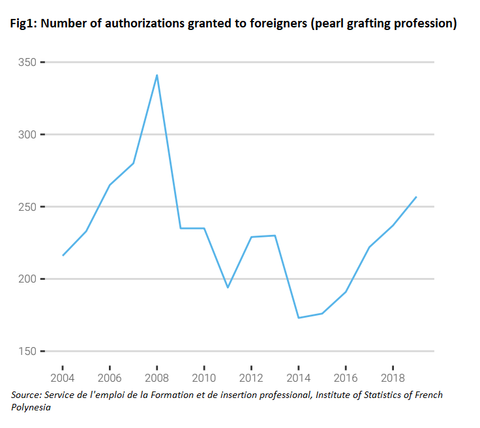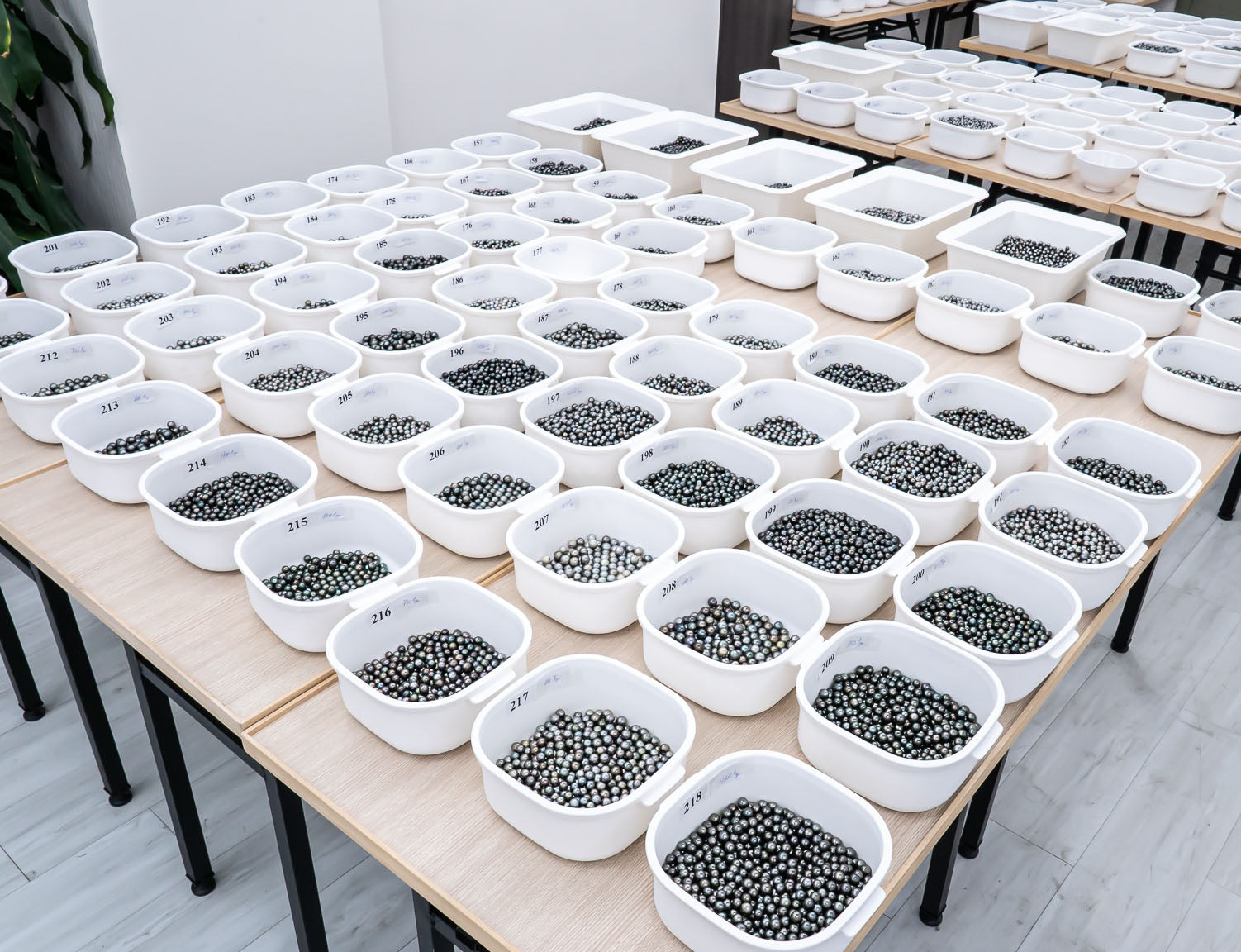
Tahitian Pearls Market 2019 Review
2019, a difficult year for the pearl
Pearl culture is French Polynesia's second own resource after tourism and ahead of products from some fishing. The operating area and the number of authorized producers decreased in 2019. Exports of pearl products now represent only 50% of export earnings from local products, or 12 points less than in 2018. These receipts amount to 5 billion F.CFP. The price per gram of pearl for export fell by 19% and stands at 485 F.CFP.
Production: the operating area
The total area exploited for pearl farming at the end of 2019 is decreasing by 6.5% compared to 2018: it stands at 8,456 hectares for 694 authorized producers (- 5%), i.e. an average of 12 hectares by producer. Areas granted for exploitation pearl are calculated on the basis of occupation permits of the maritime public domain 1.
The geographical distribution of the areas exploited remains broadly the same as in previous years. The Tuamotu archipelago represents 72% of the exploited area, down 2 points compared to 2018. The exploited area decreased by 8.8% to 6,122 hectares. The surface area exploited in the Gambier's is increasing from 1 point to 23%, or 1,980 hectares. Les Iles Sous-le-Vent are home to 4% of the exploited surface (354 hectares).
The total authorized area is spread over 31 islands: 26 islands of Tuamotu, Mangareva in Gambier, 3 in Les Iles Sous-le-Vent and 1 in Tahiti. The number of producers of pearl products is declining in 2019.
It went from 378 to 358 (- 20), a decrease of 5% compared to 2018. The number of pearl oyster producers stands at 604, a decrease of 1% (- 9) compared to the previous year. The number collection stations fell to 8,618 (- 8%).
Since the Country Law n ° 2017-16, producers of products pearl makers have the obligation to present their productions to the cell of quality control of the Department of Marine Resources (DRM) for recording. 9,106,908 pearls were the object of a post-production check, for a weight of nearly 13 tons in 2019. 52% of these controlled pearls come from Arutua and Gambier. The number of work authorizations granted to grafters foreigners in 2019 is 257, 20 more than in 2018.
Traders and auctions
The number of traders in 2019 is 23 traders, the same that in 2018, since no new card was issued and no canceled card.
The international auctions (VAE) organized in French Polynesia take place at the same periods every year: March, July and November. This year, a professional organization (GIE Poe O Rikitea) as well as the SC Tahiti Perles organized auctions. About 1 million pearls have been presented during these sales.
Exports: drop in volumes and revenue from pearl products
In 2019, export earnings of pearl products brought in 5 billion F.CFP to French Polynesia, a decrease of 34.6% compared to the previous year (- 2.6 billion by F.CFP). The last fall of this magnitude was record in 2008. They now represent only 50% of the value of local exports (- 12 points compared to 2018). The drop in the volumes ordered and the price per gram of the pearl explains this results. The decline in exported volumes is less significant than that of receipts (- 18.5%).
Exports of pearl products are classified into three categories. Raw cultured pearls account for 97% of the value pearl exported in 2019. Articles in pearls represent 2% of this value, and keishi, mabe with other pearls of raw cultures tinted 1%.
Exports of raw cultured pearls decrease by 35% in value compared to 2018 which account for 4.8 billion F.CFP. These revenues decline for the second year in a row and now represent 48.6% of the total value of exports local (- 11.8 points over one year).
The price per gram of the pearl decreases by 19% to 485 F.CFP. It is the lowest price since 2011.
The raw cultured pearl export earnings of 2019 are largely below the average, for the past five years (7.6 billion F.CFP). The volumes exported, revenue and the price per gram all decrease this year. French Polynesia has never recorded an amount low in revenue from raw cultured pearls.
Exports of pearl articles brought in 91.7 million of F.CFP in 2019 (- 11.9% compared to 2018). Which is below the average bar for the past five years (120 million by F.CFP). This decrease is explained by the decline in orders from France (- 45 million F.CFP, i.e. - 74%) and United States (- 16.8 million F.CFP). New Caledonia becomes the first importer in 2019 with 22 million F.CFP (+ 17 million F.CFP) followed by Hong Kong (+ 16.7 million F.CFP). French Polynesia also exports pearl shells from pearl farming activities. In 2019, pearl exports reported 240 million F.CFP (+ 14.2%).
The main importing countries of black pearls from French Polynesia are Hong Kong and Japan, they share almost all of the exports with 62% and 31% respectively in value. Hong Kong purchases fell 29% (- 1.2 billion of F.CFP) with an average price per gram of 453F.CFP (- 16%), those of Japan of 45% with an average price of 565 F.CFP (- 22%).
Source of the article: The Institute of Statistic of French Polynesia.
Cmwpearls only act as sharing information



Leave a comment
This site is protected by hCaptcha and the hCaptcha Privacy Policy and Terms of Service apply.